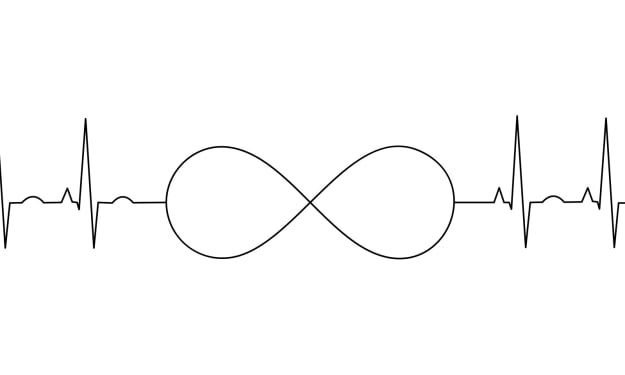What Is The World You Live In Now?
– whatever it is, you can transform it.

In the Buddhist tradition, transformation is one of the key elements.
Everything is in constant change, and being attached to anything is foolish. How these changes work is explained in the theoretical teaching of the Lotus Sutra. The Ten Factors describe the process and inner workings of life. In my blog, ‘Life Is Bigger Than Your Intelect’, I wrote about it.
Because we live in a tangible world that works as described in the ten factors, the way life emerges from the infinite potential and takes shape as life-states known as the Ten Worlds.
The Ten Worlds were imagined as separate worlds where living beings are born. Early Buddhist teachings have vivid descriptions of hells and the heavens, but none of us had no hope of gaining enlightenment and entering the heavens in this life. Only after countless lifetimes could a person enter those higher worlds. And similarly, going against the teachings would lead us to the hells of incessant suffering. Not very hopeful.
Nichiren Daishonin, a Buddhist scholar and monk (1222–1282) who lived in Japan and studied all major Buddhist works and classical Chinese philosophies, was able to change the viewpoint profoundly. His insights and research of the literature revealed that all teachings point to the one revolutionary truth: we all have those worlds in us, and we can transform them and not be shackled to one of them infinitely. In one of his many letters to his followers, Daishonin writes: "Neither the pure land nor Hell exists outside oneself; both lie only within one’s own heart".
It was a major reform of Buddhist philosophy. Because Daishonin had the guts to say that we all are equally worthy of respect and have enlightenment (Buddhahood) in our life if we want to reveal it, it was too much for the medieval Japanese military rule.
Immediately after Daishonin declared his views in 1253, the persecutions started, and he was almost beheaded as a thought criminal of his days and twice sentenced to exile to certain death. However, Daishonin survived and honed his teachings that we can study today. He left hundreds of scholarly articles and letters of encouragement and advice to his followers.
So, back to the ten worlds now that we know they exist within us and around us and not in some distant past or future as separate magical worlds.
The concept of three thousand possibilities in a single moment of life gives us a framework to unpack the infinite potential we all possess.
If there are ten factors and three realms (the realm of self, the realm of environment, and the realm of society), there are also ten worlds or life-states. If we multiply the ten factors by the three realms, we get 300. How, then we talk about three thousand possibilities?
The nature of life in the Buddhist view has the idea of potential: a life-state of extreme something that can change at any given moment to the other extreme. Simple but not obvious: each of the ten life-states can mutually possess all of the ten worlds as simultaneous potential.
Because there are ten life-states or worlds, this mutual possession counts as 10x10, which equals 100. So, now we have the maths: 10 factors multiplied by three realms, multiplied by ten worlds x ten worlds equals 3000 possibilities in a single moment of life. It means that we, in essence, have infinite ways to change the situation at any given moment.
The Ten Worlds
What are the ten worlds? A couple of thousand years of Buddhist practice, philosophy, and history have distilled ten worlds as follows:
- Hell
- Hunger
- Animality
- Anger
- Tranquillity
- Rapture
- Learning
- Realisation
- Altruism, or Boddhisattva
- Enlightenment, or Buddhahood
We live in any of those worlds or life-states.
Like earlier cited, Daishonin revealed that they are not something external and out of reach but in our hearts and minds. They are inbuilt in our life as a potential outcome based on our thoughts, words and deeds, or our karma we accumulate.
There is always a dominant life-state depending on the karma we have created. It means that we gravitate to one of these life-states more than others.
For example, some of us seem to be always a bit angry no matter what. Nothing is right or good for that person. Anger is the dominant life-sate for they, and they tend to react from that life-sate to the external stimulus. Similarly, some of us seem to be curious and always learning something new. The dominant life-state of that person is Learning.
Let’s look at each of the life-states one by one. There are always two sides to them: positive and negative. We choose which life-state we gravitate to and whether we use it positively or negatively.
Hell
Hell is the life-state of a total lack of hope. It is a dark place where you don’t see any outcomes or way out. In this world, you are a victim and powerless.
The positive side of Hell is that once you have experienced it, you can build compassion and help those in Hell to get out and transform their hellish circumstances for the better. Without the personal experience of it, empathy and compassion are not possible.
Hunger
Hunger is a life-state where you never get enough of anything you want. It is a constant yearning for more, making you physically, emotionally and intellectually obese. Even Mick Jagger knows the ugly truth of this world. There is no satisfaction.
You can use this life-state, for example, to build a hunger for learning and justice on the positive side.
Anger
Anger is characterised by the will to dominate others. It is in its ugliest form a brutal use of force to control everything and everybody. When you are in this life-state, you see enemies and externalise the causes of you suffering and the bad things you experience.
Dictators and tyrants of all sorts base their actions on this life-state. Smiling assassin is an excellent example of this life-state, too. Quite often, Anger is camouflaged as a smooth talker.
If you use you Anger for good, it can be a great way to fight for justice and peace — as long as it doesn’t become the dominant life-state.
Tranquillity
Tranquillity is you humane life-state. You experience peace within yourself and others. You can reason and surface your false assumptions and be more objective. It is also a life-sate where you can recharge you batteries, rest and recover.
However, it can also lead to a passive attitude and escapism if you are not careful.
Rapture
We all yearn for love, joy and happiness. This is the life-state you experience when your wishes are fulfilled. Seeing your loved one makes your hearts sing, and you feel happy.
However, this is not a long-lasting life-sate. You might see the loved one and be in the seventh heaven, but then you see somebody kissing that true love passionately, and you fall into the Hell of the darkest suffering. From Hell, you quickly jump to Anger, jealousy eats you joy, and you become these murderous creatures who yearn for revenge.
Or, you win the lotto and don’t realise that the money can become an unbearable burden after the first burst of joy.
Rapture or joy is fleeting based on getting our changing needs occasionally fulfilled. It won’t last.
Learning
Learning indicates that you want to understand the world by learning how it works, how we as humans work, and what to do with all the knowledge. It is the first of so-called noble worlds because it requires conscious efforts to manifest. The six lower worlds are reactive if you are not careful. They take over in a split second, whereas these noble worlds require you conscious efforts to become your life-state.
Learning is an excellent way to aim higher, but on the negative side, it can lead to arrogance and a know-it-all attitude.
Realisation
The Realisation or partial enlightenment is a life-state where you have the Eureka moments. You suddenly understand something new, creative and unique. The concept of the Flow state, first described by Mihaly Csikszentmihalyi as part of Positive Psychology, refers to a state of complete immersion and focus in an activity, where time seems to fly by and your skills are perfectly matched to the challenge at hand. It is a state of mind that can lead to increased happiness and fulfillment in life. It is also a state of awe and wonders in front of the universal truths. Alber Einstein didn’t come up with his theory of relativity by learning only facts but realising how everything forms something that went way beyond the existing science and old assumptions of the science.
Artists, scientists and great leaders often draw from this life-state. However, it can also lead to myopic and distorted views and become destructive instead of creating value.
Altruism, or Boddhisatva
Boddhisatva takes suffering away, gives joy in return, and does not ask anything in return but works tirelessly to benefit others. The motherly love is one form of this life-sate. In recent history, Mother Teresa exemplified this life-sate.
If this life-state leads to self-sacrifice, it can cause suffering and loss. Even altruistic people need to remember that they are humans and have to take care of themselves and their needs.
Buddhahood, or enlightenment
This life-sate can fill all the other nine worlds with energy, happiness and fulfilment. It is the only entirely positive world. It has pure and absolute happiness that is not dependent on the external factors but radiates internal strength and power to transform even the darkest corners of Hell into palaces of joy.
So, now we know what the ten worlds are. We always live in one of them, but they change like a caleidoscope depending on our circumstances.
The ten factors describe the mechanism or the framework life has for how these worlds manifest themselves in our life. We experience the ten worlds in the three realms of our existence: inside us as self, in the society as part of its fabric and then as a living organism in the physical world.
According to Buddhist thinking, the life-state we are in defines also our environment. If we are in the state of Hell, everything in our environment becomes part of that Hell.
For example, if you just got a notice that you have lost your job and all your possessions, you fell in Hell, and everything you see becomes part of your Hell even if the day happens to be the sunniest in months. The sun makes your eyes ache, and you swear against the light that is too bright.
However, if your life-sate is dominated by enlightenment, you see endless opportunities opening up after losing jobs and possessions. The creative force part of the enlightenment will give you ways to transform the situation and become happy and fulfilled. In a single moment of life, the three thousand possibilities become a wellhead of resources that will never run dry.
Applying the three thousand possibilities in the single moment of life is the core framework of Nichiren Daishonin’s Buddhism. It requires a practical tool, a practice we need to establish, to direct our lives towards happiness, enlightenment. But that’s another blog soon in this coming to Vocal.
I hope this cliffhanger leaves you in a state of hunger, yearning for more :-)
About the Creator
Jussi Luukkonen
I'm a writer and a speakership coach passionate about curious exploration of life.
You are welcome to subscribe to my newsletter, FreshWrite: https://freshwrite.beehiiv.com/subscribe






Comments
There are no comments for this story
Be the first to respond and start the conversation.